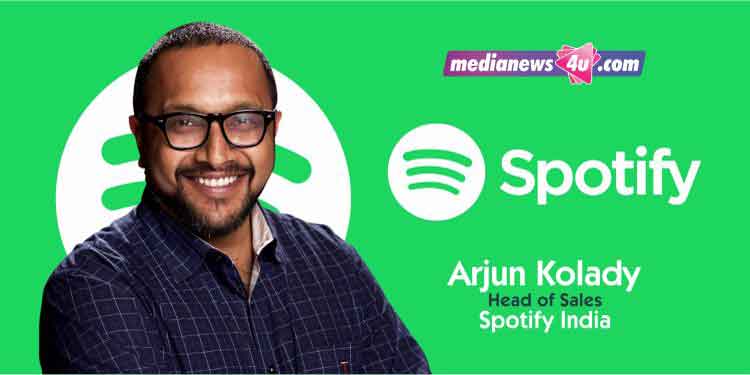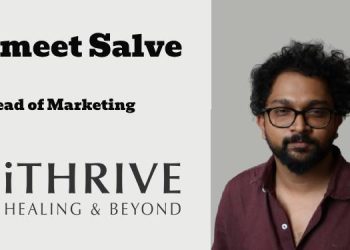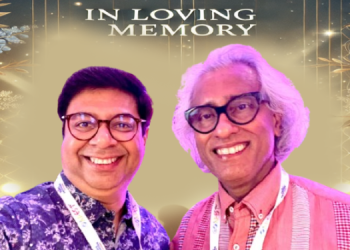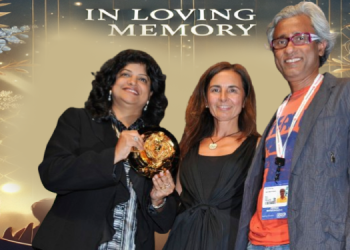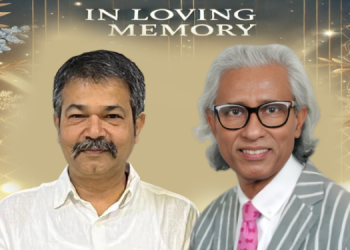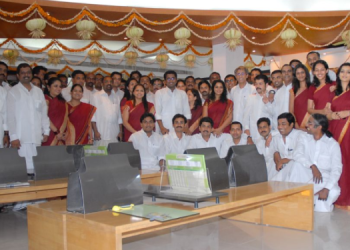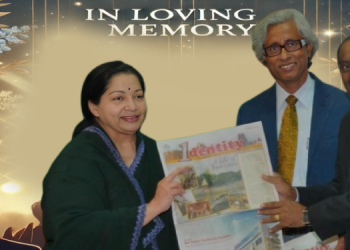Spotify is a Swedish audio streaming and media services provider founded on 23 April 2006 by Daniel Ek and Martin Lorentzon. It is the world’s largest music streaming service provider.
With Spotify, it’s easy to find the right music or podcast for every moment – on your phone, your computer, your tablet and more. There are millions of tracks and episodes on Spotify. So whether you’re behind the wheel, working out, partying or relaxing, the right music or podcast is always at your fingertips. Choose what you want to listen to, or let Spotify surprise you. The listener can also browse through the collections of friends, artists, and celebrities, or create a radio station and just sit back and enjoy.
Arjun Kolady, Head of Sales, Spotify India speaks to MediaNews4U on what is happening in Spotify and how Spotify is looking forward to sharing some interesting insights that reaffirm why the ‘Power of Audio’ for brand communications is the future for advertisers and marketers. He also talks to us about, Trends that defined 2021 and Trends to look forward to in 2022 in the domain of audio advertising. Landscape change and key takeaways for brands navigating a dramatically different environment. He also touches upon the active audiences for brands – audience insights & listening behaviours. In the past one year Podcasts are gaining prominence, developments on ad placements around podcasts and finally Audio-first multimedia solutions, FMCG campaign performance via audio.
How has Spotify as a brand grown in the past one year?
The last year has been an unpredictable one for many brands across the world, and India is no different.
From an advertising perspective, while there were some uncertainties when the second wave of pandemic hit India, the business recovered quickly. Our ads business has been back on track for months now. In fact, as the festive season approaches, we are seeing a strong rebound in the market and an acceleration in the business overall.

From a listening perspective, we’ve seen steady growth in the number of users and the time they are spending on Spotify, consuming music and podcasts. In fact, when it comes to consumption, Spotify is ahead of most other audio streaming platforms in the market.
How can brands today which are into targeting their specific TG, use Spotify?
The audience targeting features on our platform enable advertisers to reach listeners across devices, moments, and formats as they engage with their favorite music and podcast content.
Spotify’s logged-in audience enables brands to identify users across their devices, within different moments and contexts throughout their day, to tell an effective story that will resonate with listeners. Historical listening behaviours give you insight into listener interests over time, enabling you to reach the right listener with the right message. Brands can use real-time targeting to deliver a seamless ad experience and engage with users in specific moments throughout their day. In addition to age and gender, advertisers can target by location, device, interest, platform, genre, and so on.
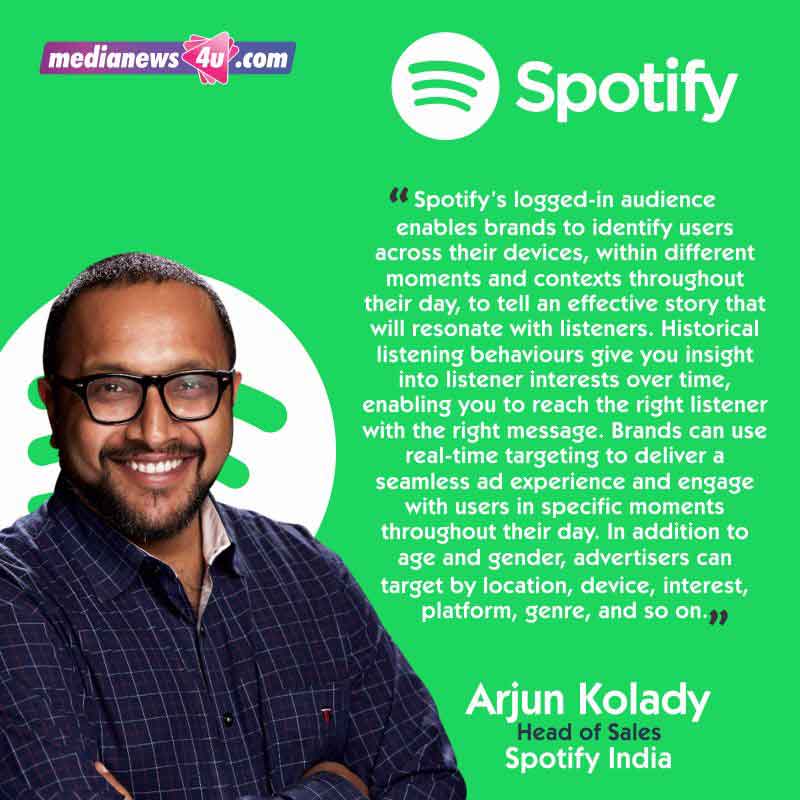
Our targeting capabilities are what distinguish us from most other digital platforms. While age, gender, and device-based targeting is available on most platforms, Spotify is uniquely positioned to add context.
For example: the ability to target people in-car or at home on connected devices like home speakers, connected TVs, gaming consoles and so on.
Digital and online streaming has grown exponentially during this pandemic, how is Spotify capitalizing on this?
Spotify has always focused on catering to the moods and moments of our listeners. In that sense, we’ve always had playlists and podcasts that cater to the everyday activities of our listeners – right from meditation and sleep, to work out and working from home.
During the pandemic, we saw a change in the devices on which listeners were consuming their audio content, and in the type of content, they were searching for and listening to. The one thing we did was make the discovery of this content easier. So, our ‘At Home’ hub on the app would let listeners find playlists for cooking, cleaning, working from home, exercising, meditating, and so on. Our goal is to be a part of our listeners’ lives no matter where they are or what they are doing. 79% of audio consumption takes place when the visual medium cannot reach the audience, and that’s where we want to be with and for our listeners.

Your recent campaign, why Deepika?
That’s a marketing campaign and not something I can speak to in detail, but what I can tell you is that we work with talent that resonates with our audiences. The recent ads highlight the ease of using Spotify, and Deepika, who has a strong connection with the audiences across age groups, seemed like the right fit to deliver that message for us.
What are the trends in regards to Marketers exploring the audio platforms for their brands?
As per the latest emarketer report (image shared below), in India, time spent on audio streaming (music + podcasts) is more than social, messaging, video streaming, gaming – it is incredible. In fact, it is more than double the time spent on streaming video. And yet, more and more advertisers are spending more and more money where consumers’ attention and time spent is limited. It is only a matter of time before monetisation catches up with time spent.
While streaming audio is relatively new, audio as a format has been around even before TV – as radio, the first broadcast medium. Whenever new platforms come up, the first tendency is always to try and adapt what worked in the old medium to the new – so the first TV ads were just radio announcers on screen, and the first YouTube ads were just TV ads. Over time brands learn about user behaviour and best practices and adapt their communication to suit the medium. In India, most brands are in this learning/unlearning stage.
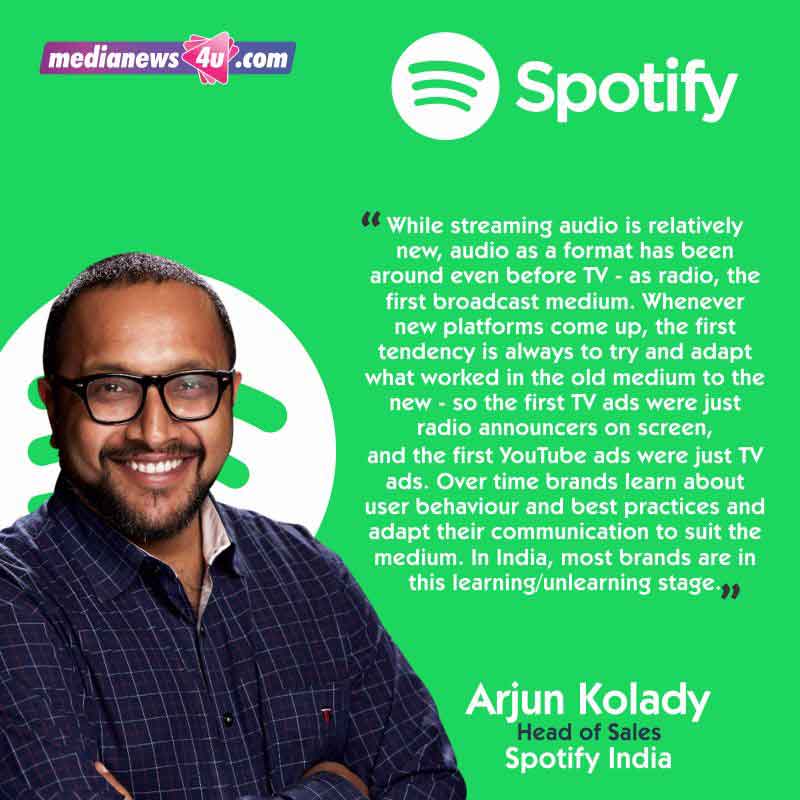
That said, there is a recognition that for GenZ audiences, audio is a must have, and the same with at home audiences, cord-cutters, and screen time-conscious millennials. Brands are exploring deeper audience targeting, customised and regional language creatives, sequential storytelling, and podcast advertising. There has also been a serious growth in programmatic advertising, and as always, the focus on data and insights continues to grow.It is still very early in the digital audio journey for marketers in India, so many of the brands that are working with us closely are pioneers in their own right.
What is Love Audio, can you elaborate?
‘Love Audio’, is a business marketing brand for us. Under Love Audio we do multiple things, for example: a recent event for FMCG marketers and brand leaders called ‘Love Audio & FMCG.
It is an in-house brand, we do events, reports, partner with FMCG to drive awareness under the Love Audio umbrella.
Is Spotify also into product placements?
We do not do product placements and we don’t create playlists for brands. Our editorial team is totally focused on artists & bands. We do playlists for our listeners. However, we do provide the tools to curate playlists, curate profiles and to curate the music under these profiles.
A list of top brands, very popular and they serve the needs of the consumers. Wherever there is an overlap between the brand and the playlist, our passion points and targets we allow these brands to sponsor the playlists.
If you mean product placement then in that way, yes if the brand is sponsoring the playlist and if there is an audience then the ad as part of the playlist belongs to the brand.

